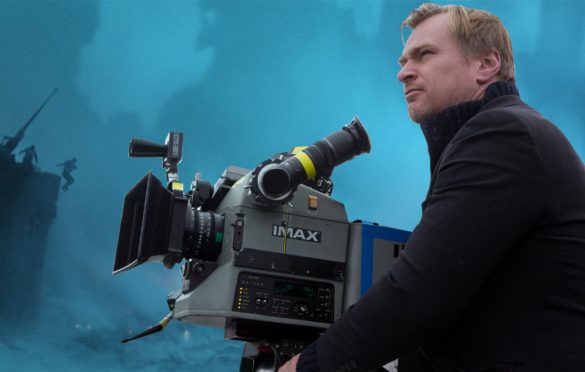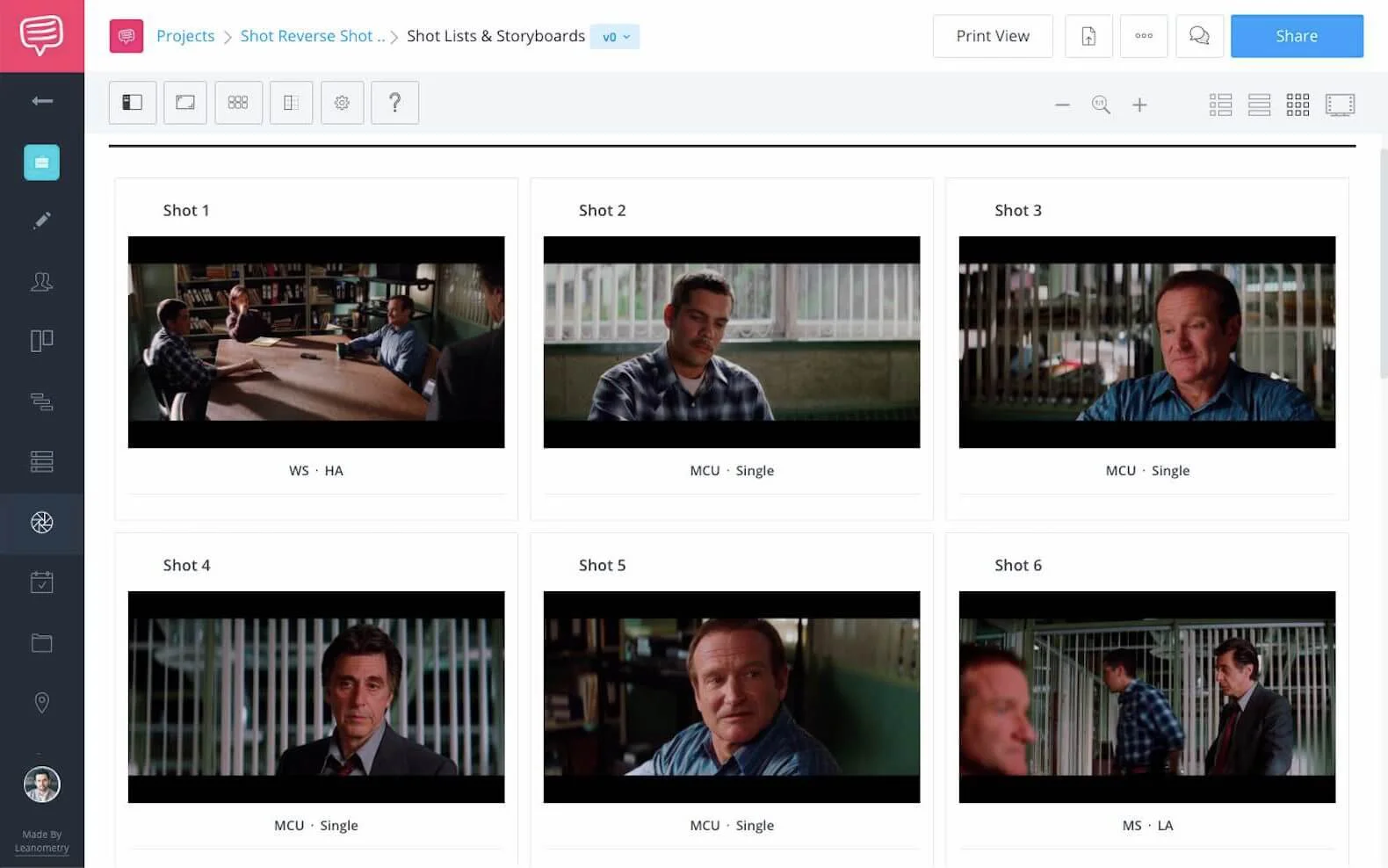How do you learn from a director like Christopher Nolan? You can watch his films, or listen to the points he makes during filmmaking interviews.
We took the best Christopher Nolan quotes from various interviews. Then we compiled a video with examples from his films, so that way you can perfectly understand the directing tips he gives in each interview.
Curious to learn more?
Lezgo.
The Director's Chair: Christopher Nolan
Christopher Nolan Interviews
1. Build Non-Linear Timelines
Why do certain directors like Nolan enjoy building non-linear timelines in their films? Additionally, why do viewers seem to enjoy them so much?
Non-linear timelines are easier to follow in cinema when compared to other forms of entertainment. Cinema gives a viewer a vast amount of information all at once, so it is easier to track alternating timelines while also being entertained.
Christopher Nolan Memento Interview
You can also use non-linear timelines to provide context for something, so while on the one hand you have a mysterious story in progress, you can then cut to another timeline to provide some (additional) context.
Christopher Nolan films are built around mystery because it provides entertainment and keeps the viewer interested. Extra timelines allow you to slowly introduce context that adds new layers to the story and builds resolution.
Christopher Nolan Quotes
2. Intercut Multiple Scenes
Intercutting scenes are a great device for efficient storytelling, and you can find examples of this from the earliest westerns and films like Star Wars.
There are a number of great intercut scenes in Interstellar. Here's a quick but complete Interstellar script breakdown to see how Nolan doesn't just intercut action, he's also weaving themes of love and sacrifice with theoretical concepts on black holes.
Interstellar Ending Explained • Subscribe on YouTube
When you have multiple sequences that occur at the same time, you can synchronize certain story beats so that the viewer is hit with specific emotional impacts from various different angles all at rapid fire.
Christopher Nolan Interview | Intercutting
When you listen to the quotes from Christopher Nolan interviews, he mentions how intercutting is also a helpful way to avoid coverage gaps.
You can avoid issues with the 180 degree line when your cut to another sequence because it acts the same as a cutaway, resetting the viewer's orientation.
For instance, The Dark Knight Trilogy often had scenes where Batman had a problem, the cops had a problem, and the city had their own problems.Batman Begins | Train Scene
As each narrative played out, you’d always have a fresh new set of problems, and stress presumably builds at three times the normal rate.
The other way Nolan uses intercutting is in his montage sequences. We took a closer look at how Nolan actually reinvents the montage — in his endings, to concentrate emotional catharsis, and to express theme. Here's a video on what we came up with.
How Christopher Nolan Uses Montage • Subscribe on YouTube
Christopher Nolan Interview Quotes
3. Capture Insert Shots Often
As Christopher Nolan mentions in the interview below, inserts are somewhat easier to record when compared to standard scene coverage, and they give a filmmaker some breathing room in the edit.
This Christopher Nolan interview:
Christopher Nolan Interview | Inserts
This breathing room takes form in the ability to blend together separate takes by cutting to a shot of the insert and then cutting back.
Inserts do even more than this, as they give a director an opportunity to attach some emotional resonance to specific objects in the story.
One of the quotes you often hear in Christopher Nolan interviews is that the best objects are tied both to the narrative events in your story, but also tied to emotions that support the theme of your scene or film.
The Prestige | Opening Scene
Nolan uses objects in his stories a lot. Think of the pinwheel in Inception, or the birds in The Prestige, or the rubber gloves in Insomnia.
These objects are important to their respective stories, and because Nolan introduces them in a manner that illustrates a character’s emotional connection to the object it evokes emotions whenever he cuts to the insert.
Auteur Theory Made Practical
Explore directing techniques used by the greats
Create works like these iconic auteur directors. Explore practical directing tips you can immediately put into action on your next project
EXPLORE Auteur Directors
Director Christopher Nolan
4. Consider Scene Geography
Christopher Nolan films are built on the medium of cinema, and this is due to Nolan’s lack of stage experience. This isn’t a bad thing, mind you.
Many actors and even directors come from the world of stage, and so they think of performances and film blocking a bit differently. They rarely put as great an emphasis on the placement of the camera as a pure cinema director.
Listen to some of the helpful quotes in this Christopher Nolan interview:
Christopher Nolan Interview
This scene from Insomnia shows you how Nolan thinks of scene geography.
The interrogation scene in Insomnia has large narrative implications, multiple actors in the space, and the scene coverage varies as the story shifts.
This is one of those directing tips that may or may not work for everyone, but Nolan seems committed to this idea, as he mentions in his interviews.
Check out the focus scene in the video below:
Interrogation Scene | Insomnia
In this scene, Dormer is scrambling to do damage control, and each time he changes his tactics or makes a new decision, Nolan switches shots in the edit to visually signal this change in overall behavior, but….
Nolan knew he could combine some of the coverage in a way that made his day a little easier. It’s a great example of Nolan using a single camera setup to capture two separate pieces of coverage used in the scene.
Take a look at how he does this in the shot list below:
Insomnia | Shot List Made In StudioBinder
The shot list above provides a screenshot from various moments in the scene, and help you to understand Christopher Nolan's robust blocking.
This clever blocking allows for richer, better scene coverage in less time. Nolan presumably gets more coverage out of a single setup, and he understands his main coverage should support important decisions made by Dormer.
Nolan claims to avoid monitors on set because he prefers to be in the physical space near the camera. This came from Nolan operating the camera during his first few short films, and it forces him to think of the scene geography.
Christopher Nolan Directing Style Tips
5. Lens Proximity for Intimacy
Christopher Nolan said in an interview that he prefers to use prime lenses on his films for the same reasons many filmmakers prefer prime lenses.
Prime lenses force the filmmaker to move the camera to the ‘correct’ angle rather than simply zooming in or out to get additional coverage.
If you’ve studied focal lengths and lens types, you will know that a wide angle lens will create a very different image from a long lens. The movement will register differently, and the intimacy level will change.
Christopher Nolan Interview | Lens Proximity
While filmmakers like the Coen Brothers and Roger Deakins have used wide angle lenses placed rather close proximity to the actor, Nolan and Wally Pfister often used long angle lenses in close proximity to an actor.
Instead of a sort of warped, unattractive, and somewhat cynical image what you gain is a thoughtful, highly severe, and detailed images.
Long lenses at close proximity often obscure the background with a shallow depth of field, so the viewer is forced to focus on the emotions.
A wider lens will help to present more information, and help to provide a viewer context through set design and surrounding imagery. Here's a short video on the working relationship between Nolan and his former DP Wally Pfister on the combination of stylistic naturalism they were constantly after.
Wally Pfister Cinematography • Subscribe on YouTube
Once you establish the tone of your project, and hammer out your own narrative values, you can then make focused cinematic decisions.
Auteur Theory Made Practical
Explore directing techniques used by the greats
Create works like these iconic auteur directors. Explore practical directing tips you can immediately put into action on your next project
EXPLORE Auteur Directors
Christopher Nolan Film Style
6. Make Sure to Keep It Real
Christopher Nolan films prefer to keep things practical… as far as effects go. Green-screens and CGI have created a lot of opportunities for filmmakers to build a world in post-production that is convincing to the viewer.
Inception | Rotating Hallway
However, when you film on set with a green-screen it can be difficult to generate the same sense of authenticity you might achieve when filming the scene with real extras, real effects, and real co-stars to play against.
Superhero movies often seem hollow because everything is computer generated, and no matter how good your digital effects team is, you will always gain from layering CGI effects over practical effects and imagery.
Showcase your vision with elegant shot lists and storyboards.
Create robust and customizable shot lists. Upload images to make storyboards and slideshows.

